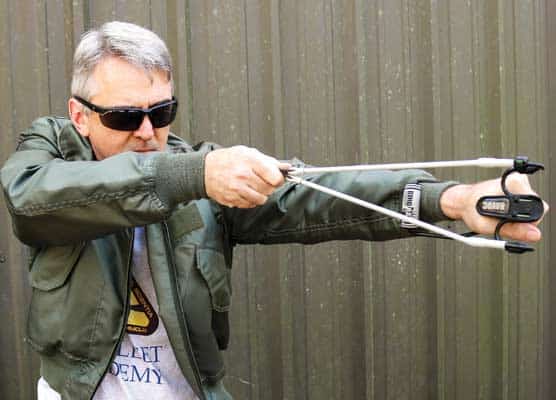The Boys of Bedford
D-Day, June 6, 1944
If you haven’t visited the D-Day Memorial, you’ll find it under the Peaks of Otter, in the green hills of Virginia between Roanoke and Lynchburg, in the quiet little town of Bedford.
And why is this national monument located in such an out-of-the-way place as Bedford, Virginia? Because on June 6, 1944, of all the cities and towns in America, per capita, the mothers and fathers and wives of Bedford gave more than any others to gain that foothold in the sands of Normandy.
As the 1930s ended, rural Bedford, population about 3,200, was still suffering the worst effects of the Great Depression. Prices for crops and dairy products were at rock bottom and most farmers—those who hadn’t lost their lands—couldn’t afford enough seed to plant more than subsistence crops to feed their families. Industry was scarce; a few fabric mills and service businesses paid very modest wages, and much of the commerce was on “the turnip standard” rather than gold. Still, the people counted their blessings, held fast to the bonds of church, families and friends, and loved their stream-laced forests and meadows passionately.
But the young men of Bedford found one way to scratch up a little hard cash: they enlisted in the National Guard, happily picking up a single greenback dollar each on Monday nights after drills. Two weeks of summer training paid a true windfall for them.
Billets in the unit were limited, and competition to fill openings was such that when twin brothers Roy and Ray Stevens turned 18 in 1938, they matched coins to determine who would fill a sole opening. Ray won, and when another billet suddenly opened a week later, Roy joined him. The money helped feed their 12 brothers and sisters. The stories of other “summer soldiers” in Company A, 1st Battalion, 116th Infantry Regiment of the 29th Division read much the same, and virtually all of them had known each other all their lives.
Service in the Guard seemed more of a social activity than a military regimen—but all that ended in August of 1939. The boys of Bedford had just returned from summer training. They were cleaning gear in the armory when they learned the Wehrmacht had invaded Poland. On September 4, Britain and France declared war on Germany.
War Comes To Bedford
As Europe burned, training intensified. The unit took in a flood of young men as older men left. In October 1940, a month after Congress authorized expanding the Army from 75,000 men to 800,000, Company A received mobilization orders. The United States was not yet in the war, but the war was felt in the streets of Bedford. The day before federal induction, Wallace Carter, just turned 18, enlisted in Company A.
December 7, 1941 found them slogging through frozen mud, maneuvering in the woods of North Carolina. Their mobilization was supposed to last a year. They were looking forward to being released from active duty and going home for Christmas. Suddenly a halt was called, and officers broke the news: the Japanese had bombed Pearl Harbor.
The boys of Bedford wondered if they were headed to the Pacific, an idea almost as alien to them as flying to the moon. None of them could have foreseen they would be going to England and receiving some of the toughest and most specialized training US soldiers had ever undergone. The boys of Bedford were destined to be at the leading edge of the first wave of the greatest invasion in the history of warfare. Theirs would be the first boots on the beach.
Bedford-Bound For Normandy
Many of Company A’s soldiers wondered what was so “specialized” about making an amphibious landing on a beach. Getting out of a landing craft and charging inland certainly seemed dangerous, but not very complex. They learned. From response to shipboard emergencies to dealing with beachhead obstacles; blowing holes in concertina and movement through minefields under fire; cliff assaults; attacking machinegun nests, pillboxes and bunkers; securing accesses off the beachhead and defending against counterattacks; hand-to-hand combat with knives, entrenching tools, their helmets, feet and fingers.
As hard-earned lessons poured in from other amphibious landings, the men of the 29th incorporated them into their own training. Mistakes could be learned from and advantages taken, but one repeated fact seemed unalterable: the first wave is the deadliest, and if it fails, everything may fail.
They came to understand that their success or failure may decide the outcome of the war.
As D-Day neared, the boys of Bedford drew closer together. Raymond Hoback suffered severe chronic nosebleeds and was offered a medical discharge. He refused. He would not leave his brother Bedford and his friends. Sergeant John Schenk was offered a commission, but it meant leaving the outfit and probably missing the invasion. He refused. Others too shrugged off “tickets out of the war.” They would not be denied their destiny.
Destiny On D-Day
June 6th came and went. News flashed ’round the world of “significant casualties” and ultimately, success—but with few details and no casualty lists. Bedford waited, praying.
At 8:00 am on July 17, 1944, 21-year old Elizabeth Teass opened the tiny Western Union office in Green’s drug store. Immediately, a Killed-In-Action telegram began printing.
Elizabeth’s heart sank. KIA telegrams arrived in Bedford about once a week. Gold stars hung in windows all over town. But this time when the first message had clacked through the machine, it kept printing. It would continue hammering out heart-breaking lines through the early afternoon.
Thirty boys from Bedford landed in the first wave on Omaha Beach. Nineteen died there that morning, including Ray Stevens, whose twin brother Roy survived; John Schenk; Raymond Hoback and his brother Bedford, and young Wallace Carter, the last-minute enlistee. Over the following days, four more sons of Bedford died fighting in the hedgerows, securing the beachhead. This, from a town of 3,200.
They did not die unnecessarily; not as mere cannon fodder charging into German guns. They died blasting through the wire, silencing the machineguns, clearing the trenches and bunkers. They succeeded, dying so countless others could live and carry on the fight; so the world would never know the answer to the question, What if they had failed?
And that is why the D-Day Memorial lies under the Peaks of Otter, in a quiet, out-of-the-way place: because it belongs there.
*Recommended reading: The Bedford Boys, by Alex Kershaw, Da Capo Press, paperback, ISBN-10: 0306813556.



